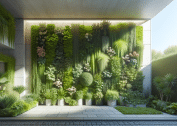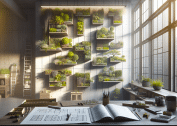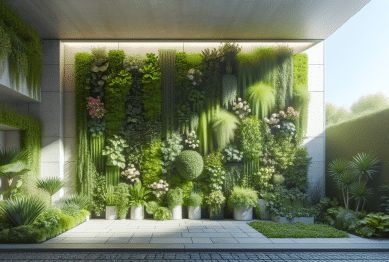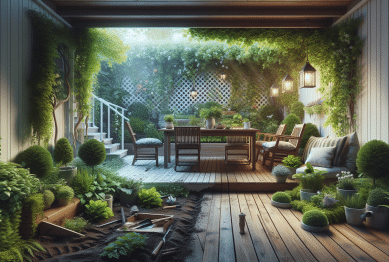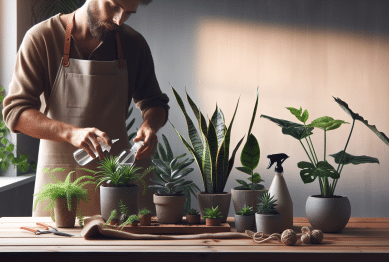Explore practical strategies for water conservation that can transform your home garden. Discover how sustainable watering, drought-tolerant plants, smart irrigation systems, and mulching methods boost garden health while protecting natural resources.
Why Water Conservation Matters for Home Gardens
Water usage in gardens can quickly add up, especially during dry spells or peak gardening season. Homeowners are often surprised by how much water their gardens actually consume, making efficient methods a high priority for both sustainability and savings. Adopting water conservation gardening practices not only benefits the environment, but it also helps to reduce household expenses over time. Residents in regions affected by drought are especially aware of how crucial these steps can be to maintain healthy green spaces.
Traditional watering habits may waste more water than you think. Conventional sprinklers often oversaturate lawns and flowers, leading to excess runoff and evaporation. By rethinking how water is delivered, especially in vegetable beds and landscaping borders, it’s possible to keep plants thriving with significantly less water. Focusing on the water needs of different species, gardeners can better target their efforts where they matter most. This targeted approach makes water conservation feel rewarding and accessible.
Embracing changes in water use benefits local ecosystems as well. Native insects, pollinators, and birds depend on healthy vegetation for shelter and food. As gardens grow more resilient through efficient watering, they can support a wider variety of wildlife. This shift in the gardening mindset goes beyond aesthetics, weaving environmental stewardship into daily routines and inspiring neighbors to adopt similar conservation practices. With growing concerns about water scarcity, sustainable gardening is more important than ever (Source: https://www.epa.gov/watersense/outdoor).
Choosing Drought-Tolerant Plants for a Lush Landscape
One of the most effective ways to save water is by introducing drought-tolerant plants into your garden. These varieties are specially adapted to thrive with minimal moisture, meaning they require far less supplemental watering compared to traditional options. Lavender, sedum, yarrow, and ornamental grasses are examples commonly recommended for vibrant, waterwise gardens. Incorporating these hardy plants leads to lush results without constant irrigation.
Drought-tolerant landscaping isn’t just for arid regions. Even in temperate climates, these plants handle dry periods better than most, reducing stress on your irrigation system. This approach, known as xeriscaping, involves thoughtful plant selection, grouping species with similar water needs, and using ground covers that minimize evaporation. Besides saving water, xeriscaping can create a uniquely attractive and low-maintenance garden design (Source: https://extension.colostate.edu/topic-areas/yard-garden/xeriscaping-7-228/).
Planning beds by sun and shade exposure also improves water retention. Placing drought-tolerant species in the sunniest spots ensures that thirsty annuals aren’t struggling in the midday heat. Many native plants are inherently adapted to local weather patterns and soils, and will flourish on less water once established. Exploring regional plant lists at your local cooperative extension can inspire new ideas for climate-smart gardening (Source: https://plants.usda.gov/).
Smart Irrigation Techniques for Efficient Watering
Modern irrigation systems offer precision where traditional hoses fall short. Drip irrigation, soaker hoses, and moisture sensors are key technologies for targeted watering. Unlike sprinklers, these systems deliver water directly to the plant’s root zone, limiting waste and runoff while creating more robust root growth. Automated timers further help by scheduling watering at optimal times, typically early morning or late evening when evaporation rates are lowest.
Smart controllers can adapt to weather conditions by adjusting based on rainfall or humidity. This way, the garden only receives water when truly needed, reducing the chance of overwatering or fungal issues. Rain barrels supplement irrigation by capturing roof runoff, providing an eco-friendly source of water for thirsty vegetable patches or potted plants. With the right technology, it’s easier than ever to achieve a balance between plant health and water conservation (Source: https://www.epa.gov/watersense/smart-irrigation-controllers).
Homeowners interested in installing or upgrading irrigation should start by evaluating soil type, slope, and plant groupings for maximum efficiency. Deep, infrequent watering encourages roots to dig deeper, increasing plants’ resilience and water use efficiency. Many state extension services provide guides or local workshops that demystify smart watering techniques. As knowledge grows, gardens can stay green while conserving precious water resources.
Mulching Methods to Retain Moisture and Suppress Weeds
Mulching is a time-tested garden technique for maintaining soil moisture and suppressing weed growth. Organic mulches, like shredded leaves, wood chips, or straw, insulate the soil from direct sunlight, lowering evaporation rates. In vegetable gardens and perennial beds, applying a thick mulch layer around plants helps keep roots cool and moist, reducing the need for frequent watering.
Mulch also prevents weeds from stealing water and nutrients. As mulch decomposes, it improves soil structure and fosters a healthy root environment. This simple, sustainable approach protects against both drought and heavy rainfall, buffering soil and reducing runoff. For a low-maintenance landscape, consider replenishing mulch once or twice a year as needed (Source: https://www.arboretum.umn.edu/mulchingyourgarden.aspx).
Inorganic options, such as gravel or landscape fabric, can be especially useful in high-traffic areas. These materials provide long-term ground cover but should be balanced with plant health needs. Taking care to avoid piling mulch against plant stems or tree trunks will prevent rot and encourage thriving growth. Well-mulched gardens demonstrate that water conservation often starts from the ground up with strategic, simple choices.
Adapting Your Watering Routines for Sustainable Results
Shifting away from a set-and-forget watering schedule is key to a truly sustainable garden. Monitoring rainfall, using soil moisture meters, and visually checking plant health can guide flexible routines. Adjusting frequency and volume according to the weather keeps gardens resilient, even as climate patterns shift. Watering deeply but less frequently promotes strong, drought-tolerant root systems.
Observing your garden daily reveals evolving needs. Signs of underwatering include wilting leaves and dry, crumbly soil, while yellowing or drooping may signal excess moisture. Keeping a garden journal helps track which areas need more or less attention throughout the season. Engaged gardeners often discover new patterns and can tailor irrigation methods to match the microclimates across their property.
Community initiatives, like neighborhood water conservation programs or local gardening clubs, can inspire collective action. Sharing tips and best practices strengthens entire communities against water shortages. Over time, small changes made by many individuals yield significant positive outcomes for the environment. Gardening is not just a solitary pursuit, but an opportunity to protect and nurture shared natural resources (Source: https://ucanr.edu/sites/UrbanHort/Water_Use_in_the_Landscape/).
Long-Term Benefits of a Waterwise Garden
A garden that uses water efficiently enjoys more than just savings on utility bills. Plants raised with conscientious water management are more resilient in the face of droughts or heatwaves. These landscapes frequently experience fewer pest and disease outbreaks, thanks to healthier, less stressed plants. Waterwise gardens can also attract an array of pollinators and beneficial insects that contribute to ecological stability.
The financial savings extend far beyond just a reduction in the monthly bill. Using fewer resources means gardeners invest less in new plants, fertilizers, and soil amendments linked to inefficient watering habits. Long-term, these gardens maintain their vibrancy with less maintenance and fewer costly interventions. Community programs may offer rebates for installing water-saving irrigation or removing water-intensive lawns, making it even easier to get started (Source: https://www.epa.gov/watersense/rebates).
Finally, setting an example through water conservation encourages others to follow suit. The ripple effects extend into schools, neighborhoods, and across communities, making every drop count. Ultimately, creating a sustainable garden is about more than immediate results—it’s a legacy for future generations of gardeners and nature lovers alike.
References
1. U.S. Environmental Protection Agency. (n.d.). WaterSense: Outdoor Water Use in the US. Retrieved from https://www.epa.gov/watersense/outdoor
2. Colorado State University Extension. (n.d.). Xeriscaping: Creative Landscaping. Retrieved from https://extension.colostate.edu/topic-areas/yard-garden/xeriscaping-7-228/
3. USDA Natural Resources Conservation Service. (n.d.). Plants Database. Retrieved from https://plants.usda.gov/
4. U.S. Environmental Protection Agency. (n.d.). WaterSense: Smart Irrigation Controllers. Retrieved from https://www.epa.gov/watersense/smart-irrigation-controllers
5. University of Minnesota Arboretum. (n.d.). Mulching Your Garden. Retrieved from https://www.arboretum.umn.edu/mulchingyourgarden.aspx
6. University of California Agriculture and Natural Resources. (n.d.). Water Use in the Landscape. Retrieved from https://ucanr.edu/sites/UrbanHort/Water_Use_in_the_Landscape/


